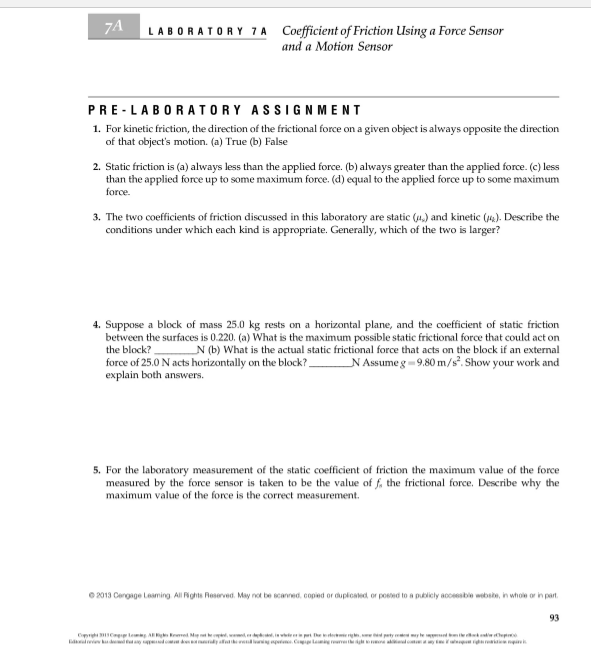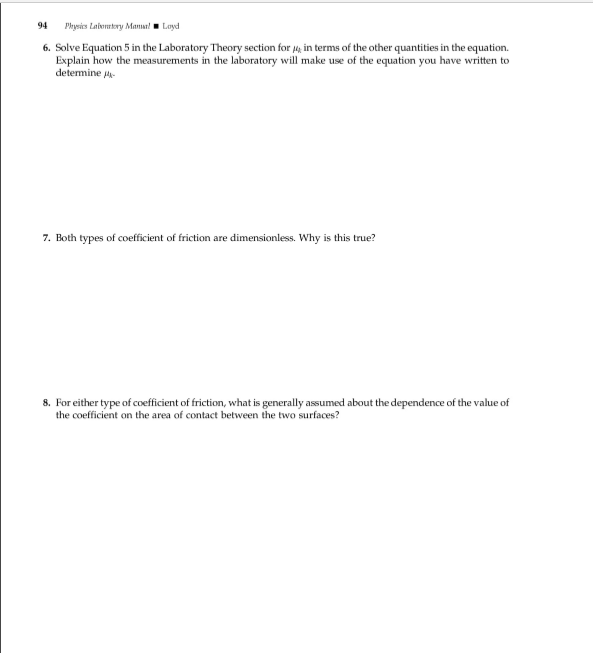7A Coefficient of Friction Using a Force Sensor and a Motion Sensor LABORATO RY 7 A PRE-LABORATORY ASSIGN MENT 1. For kinetic friction, the direction of the frictional force on a given object is always opposite the direction of that object's motion. (a) True (b) False 2. Static friction is (a) always less than the applied force. (b) always greater than the applied force. (c) less than the applied force up to some maximum force. (d) equal too the applied force up to some maximum force. 3. The two coefficients of friction discussed in this laboratory are static (u) and kinetic (). Describe the conditions under which each kind is appropriate. Generally, which of the two is larger? 4. Suppose a block of mass 25.0 kg rests on a horizontal plane, and the coefficient of static friction between the surfaces is 0.220. (a) What is the maximum possible static frictional force that could act on _N (b) What is the actual static frictional force that acts on the block if an external _N Assume g 9.80 m/s. Show your work and the block? force of 25.0 N acts horizontally on the block?. explain both answers 5. For the laboratory measurement of the static coefficient of friction the maximum value of the force measured by the force sensor is taken to be the value of f, the frictional force, Describe why the maximum value of the force is the correct measurement e2013 Cengage Leaming All Rghts Reserved. May not be scanned, copied or duplcsed or posed to a puicly accessble websie, in whole or in part. 93 Physics Laientry Mama!Layd 94 6. Solve Equation 5 in the Laboratory Theory section for in terms of the other quantities in the equation Explain how the measurements in the laboratory will make use of the equation you have written to detemine 7. Both types of coefficient of friction are dimensionless. Why is this true? s. For either type of coefficient of friction, what is generally assumed about the dependence of the value of the coefficient on the area of contact between the two surfaces?
Displacement, Velocity and Acceleration
In classical mechanics, kinematics deals with the motion of a particle. It deals only with the position, velocity, acceleration, and displacement of a particle. It has no concern about the source of motion.
Linear Displacement
The term "displacement" refers to when something shifts away from its original "location," and "linear" refers to a straight line. As a result, “Linear Displacement” can be described as the movement of an object in a straight line along a single axis, for example, from side to side or up and down. Non-contact sensors such as LVDTs and other linear location sensors can calculate linear displacement. Non-contact sensors such as LVDTs and other linear location sensors can calculate linear displacement. Linear displacement is usually measured in millimeters or inches and may be positive or negative.
Can you please do question #7? Thank you.


Trending now
This is a popular solution!
Step by step
Solved in 3 steps with 1 images






